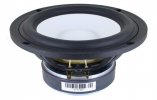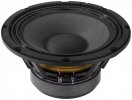DanielT
Major Contributor
New material!
"Researchers at MIT have developed a lightweight, paper-thin loudspeaker that can be attached to large surfaces like wallpaper.
Most existing thin-film loudspeakers need to stand up on their own so they can bend and produce sound. "Mounting these loudspeakers onto a surface would impede the vibration and hamper their ability to generate sound," MIT News explains.
With the researchers' new approach, the entire loudspeaker doesn't need to vibrate. Instead, it features "tiny domes on a thin layer of piezoelectric material which each vibrate individually." Space on top and bottom of the domes—"each only a few hair-widths across"—let them vibrate without being damaged."

 uk.pcmag.com
uk.pcmag.com
"Researchers at MIT have developed a lightweight, paper-thin loudspeaker that can be attached to large surfaces like wallpaper.
Most existing thin-film loudspeakers need to stand up on their own so they can bend and produce sound. "Mounting these loudspeakers onto a surface would impede the vibration and hamper their ability to generate sound," MIT News explains.
With the researchers' new approach, the entire loudspeaker doesn't need to vibrate. Instead, it features "tiny domes on a thin layer of piezoelectric material which each vibrate individually." Space on top and bottom of the domes—"each only a few hair-widths across"—let them vibrate without being damaged."

MIT Researchers Develop Lightweight, Ultra-Thin Loudspeaker Material
The design relies on tiny piezoelectric domes working together.
Last edited:







.jpg)
